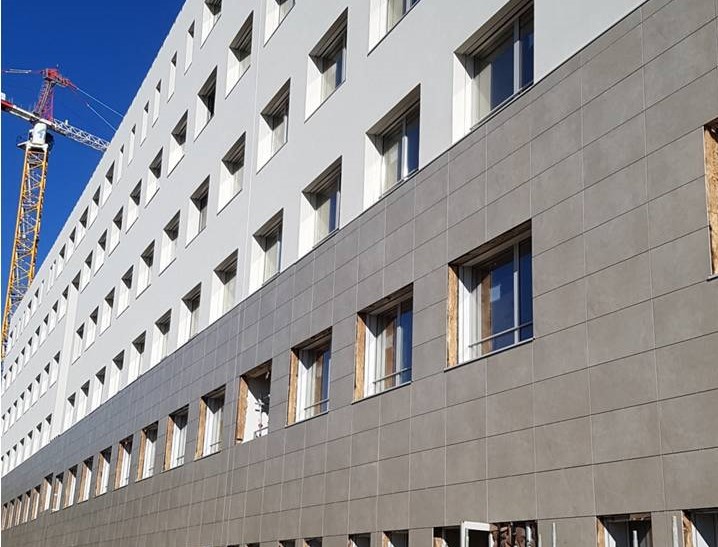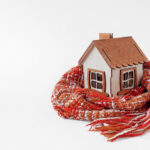When deciding between the two main kinds of internal and external insulation for a building, i.e. a ventilated façade or cladding, it is essential to be aware of the advantages and disadvantages of both.
One of the questions most frequently asked by people thinking of renewing the façade of a property is: which is better, cladding or a ventilated façade?
Before explaining why it is best to choose porcelain stoneware as a covering, it is important to emphasize that an internal and external insulation system has a significant impact on heating and air conditioning costs by making significant savings on both of them, while also improving the comfort of the interiors and the energy efficiency of the buildings.
Choosing cladding or a ventilated façade therefore requires considerable thought. And this is why it is best to start from the difference between cladding and a ventilated façade, by indicating (below) what are the main advantages of porcelain stoneware ventilated façades over thermal cladding.

Cladding and ventilated façades: the main difference between these two types of thermal building insulation coverings.
The difference between external cladding and a ventilated façade can be summarised very simply as follows: the former involves applying insulation panels to the perimeter walls of the building. After installation, these panels are covered by a protective finish created with specific plasters that give the external façade an optimum aesthetic finish. Ventilated façades, on the other hand, are a special kind of external covering that involves applying insulation panels detached from the load-bearing structure supported by a metal substructure. This system allows a cavity to be created that allows air to circulate naturally thanks to the position of openings located at the base and summit of the façade.
Both systems – external cladding and ventilated façades – have their own advantages and disadvantages. As far as the benefits of thermal cladding are concerned, this covering technique alters the external features of the building and interacts with the building’s hygrometry, i.e. the amount of humidity the building releases into the surrounding air. Ventilated façades, on the other hand, basically offer only benefits. We could say that the difference in costs between cladding and a ventilated façade is the only “disadvantage” of the latter compared to the former, but even that is a disadvantage that can be easily remedied with the numerous tax rebates available in this sector.
Renewing façades: cladding or a ventilated covering? A ventilated façade without a doubt. And in porcelain stoneware.
To remove any doubt as to which is better, cladding or a ventilated façade with porcelain stoneware, it is best to indicate the numerous benefits of this covering technique.
Porcelain stoneware is a particularly compact ceramic, obtained thanks to the mix of different natural raw materials – ceramic clay, feldspars, kaolin and sand – that are finely ground until they become a fine powder. This is then pressed to compact it without the use of glue. It is then baked at extremely high temperatures – around 1150-1250 °C – for 25-30 minutes.
The porcelain stoneware slabs are the best solution for cladding a ventilated façade because they are lighter than stone materials, such as stone or marble, are more resistant and easier to maintain and clean. In addition to this, from a visual point of view, the porcelain stoneware offers you the chance to custom design your architectural project tout court, thanks to a vast range of colours, different types of texture – wood effect finishings, marble, stone and terracotta-cement – and the extensive range of shapes on offer.
The use of porcelain stoneware on walls – as indicated in the UNI EN 14411:2016 and ISO 13006:2018 standards – guarantees the following 12 advantages:
- High mechanical resistance (tensile modulus) ≥ 35 N/mm2);
- Highly resistant to sudden changes in temperature;
- Low water absorption (≤ 0,1%);
- Highly resistant to freezing (no damage);
- Low linear heat expansion (< 7×10-6 °C-1);
- Insignificant moisture expansion;
- Non-flammable (class A1);
- Colours resistant to sunlight and ageing;
- Stain and smog resistant;
- Weather-resistant;
- Lightweight and easy to install;
- Easy to repair in the event of acts of vandalism or graffiti.
To sum up, cladding a ventilated façade with porcelain stoneware means enhancing both the property and the surrounding environment and allowing the style of any building to acquire its own, distinct personality. So, do you still have any doubts about whether to choose cladding or a ventilated façade? We are sure you haven’t!



